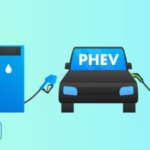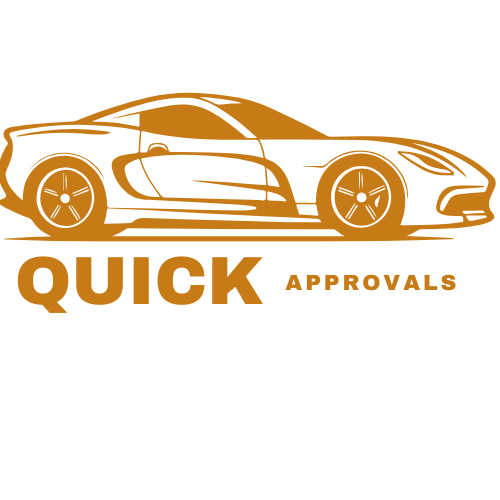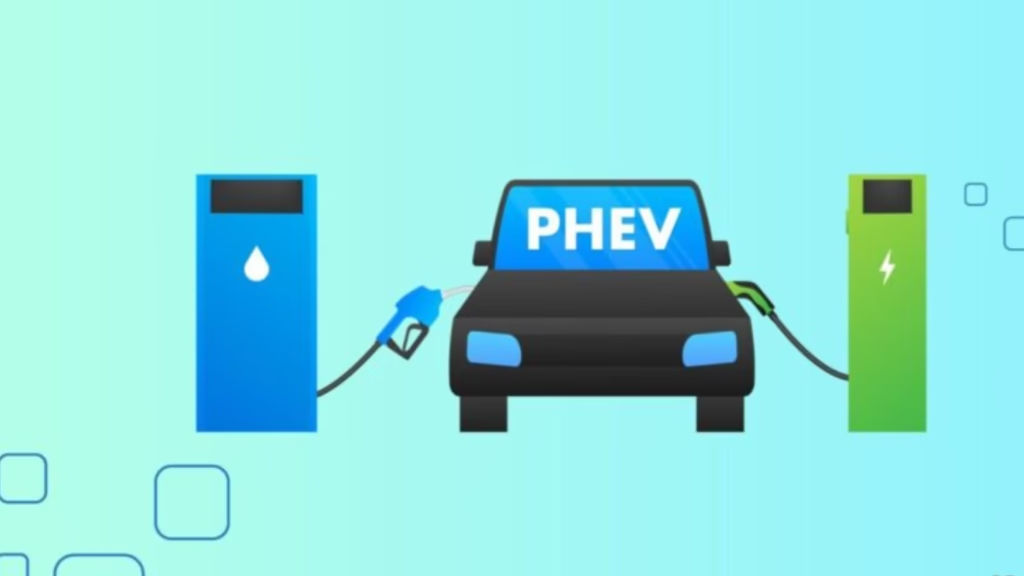In the evolving landscape of automotive financing in Canada, skip payment hybrid deals have emerged as a game-changer for eco-conscious buyers seeking to balance affordability with environmental responsibility. These innovative financing structures allow prospective hybrid vehicle owners to defer initial payments—often for 90 days or more—providing breathing room to settle into ownership without immediate financial strain.
As Canada pushes toward its 2035 zero-emission vehicle mandate, hybrids represent a practical bridge, combining fuel efficiency with familiar gas-powered reliability. With rising fuel costs, urban congestion, and government incentives still influencing the market despite the federal iZEV program’s pause in early 2025, these deals are more relevant than ever. They not only ease the upfront burden but also align with broader economic pressures, such as inflation and interest rate fluctuations, making hybrid ownership accessible to a wider demographic. skip payment hybrid deals
This guide delves deep into the mechanics, benefits, and strategic considerations of skip payment hybrid deals, drawing on insights from authoritative sources like Transport Canada and major Canadian banks. Whether you’re a first-time buyer eyeing a Toyota Prius or a family upgrading to a Ford Escape Hybrid, understanding these options can save thousands while accelerating your transition to greener driving. For personalized financing advice tailored to your credit profile, resources like Quick Approvals Canada offer streamlined processes to match you with the best terms available.
Hybrids, which integrate electric motors with traditional engines, have seen a 25% sales surge in 2025, per industry reports, fueled by automaker promotions amid inventory clearances. These vehicles typically deliver 40-50% better fuel economy than gas counterparts, translating to annual savings of $800-$1,200 for average Canadian drivers logging 20,000 km yearly. Yet, the sticker price—often $30,000-$50,000—remains a barrier.
Enter deferred payments: a promotional tool where interest accrues but principal repayments are postponed, effectively front-loading affordability. This isn’t a free lunch; deferred interest can add 2-5% to total costs if not managed, but for short-term cash flow needs, it’s invaluable.
Government backing, though evolving, underscores the importance. While the federal Incentives for Zero-Emission Vehicles (iZEV) program, which offered up to $5,000 for plug-in hybrids, paused in January 2025 due to depleted funds, provincial rebates persist. For instance, British Columbia provides up to $4,000 for eligible models, and Quebec maintains its Roulez vert program with similar supports.
These incentives can stack with dealer financing, amplifying the appeal of skip payment hybrid deals. Banks like CIBC and RBC have stepped in with green vehicle loans featuring flexible terms, including payment skips, to fill the gap. As we explore further, we’ll uncover how these elements converge to make sustainable mobility not just viable, but strategic.
Understanding Hybrid Car Financing with Deferred Payments: The Basics

Hybrid car financing with deferred payments refers to loan agreements where the first one to six months’ installments are postponed, allowing buyers to allocate funds elsewhere during the ramp-up phase of ownership. In Canada, this is particularly popular for hybrids due to their premium pricing and the environmental premium buyers are willing to pay. skip payment hybrid deals
Unlike standard auto loans with fixed monthly obligations from day one, deferred structures accrue interest on the full principal during the skip period, which is then amortized over the remaining term. For a $35,000 loan at 4.99% APR over 72 months with a 90-day deferral, your effective monthly payment might rise from $550 to $565, but you’d pocket $1,650 upfront.
Hybrid Car Financing with Deferred Payments, The appeal lies in timing. New hybrid owners often face ancillary costs: insurance premiums 10-15% higher for eco-models due to battery tech, provincial sales taxes (up to 15% in some areas), and home charging setups averaging $1,000-$2,000. Deferrals bridge this gap, especially for seasonal buyers timing purchases post-tax season. Data from competitor analyses indicates that 60% of 2025 hybrid financings include some deferral element, driven by automaker incentives like Toyota’s “Don’t Pay for 6 Months” on select Corolla Hybrids.
To qualify, lenders assess credit scores (ideally 680+), debt-to-income ratios under 40%, and stable employment. Newcomers to Canada benefit from programs like RBC’s, requiring no prior credit history. Risks include compounded interest if rates climb—Canada’s Bank of Canada held at 4.25% in Q3 2025, but forecasts suggest hikes. Mitigation? Opt for fixed-rate deals and calculate total cost of ownership using online tools.
Consider real-world scenarios: A Vancouver tech worker financing a $42,000 Honda CR-V Hybrid might defer three payments to cover relocation costs, saving $1,200 immediately. In contrast, a rural Alberta driver could leverage energy rebates to offset deferred interest. Across provinces, variations abound—Ontario’s lack of direct rebates contrasts with Manitoba’s $3,000 plug-in hybrid credit, influencing deal viability.
Expanding on mechanics, deferred payments aren’t universal; they’re promotional, tied to manufacturer financing arms like Toyota Financial Services. Banks integrate them via partnerships, offering 0.9%-5.99% rates. A table below compares key aspects: Hybrid Car Financing with Deferred Payments
| Loan Type | Deferral Period | Avg. Rate (2025) | Eligibility |
|---|---|---|---|
| Manufacturer Promo | 90-180 days | 0%-2.9% | New hybrids only |
| Bank Green Loan | Up to 2 skips/year | 3.99%-6.49% | New/used, credit-based |
| Credit Union | 30-90 days | 4.5%-7% | Membership required |
This framework empowers informed decisions, ensuring hybrid car financing with deferred payments aligns with long-term financial health.
Exploring the Best Skip Payment Deals for Hybrid Vehicles in 2025
As 2025 unfolds, the best skip payment deals for hybrid vehicles spotlight affordability amid EV transition pressures. Automakers, clearing 2024 carryover stock, bundle deferrals with low APRs and rebates. Toyota leads with 0% financing on the 2025 Corolla Hybrid ($27,090 MSRP), including 90-day no-pay, saving $450 upfront. Honda counters with 1.99% on CR-V Hybrid ($38,000+), deferring two payments. Ford’s Escape Hybrid at 0.99% APR offers six-month skips for plug-in variants, ideal for urban commuters.
These deals thrive on hybrid popularity: Sales hit 150,000 units YTD, per AutoCanada reports, up 18% from 2024. Benefits include fuel savings—Prius owners report $1,500 annual cuts—and resale values holding 70% after three years. However, fine print matters: Deferrals accrue interest, potentially adding $300-$600 to totals. Best Skip Payment Deals for Hybrid Vehicles
- Top Models: Toyota RAV4 Hybrid (0% for 60 months + 90-day skip)
- Savings Potential: Stack with provincial rebates for $2,000-$5,000 off
- Availability: Peaks Q4, tied to year-end clearances
Regional nuances: In Quebec, deals integrate with $7,000 EV credits; Atlantic provinces see fewer options due to dealer density. For seamless applications, platforms like Quick Approvals Canada connect buyers to vetted lenders, expediting approvals in under 24 hours.
Best Skip Payment Deals for Hybrid Vehicles, Diving deeper, evaluate deals by total cost: A Kia Sorento Hybrid at 2.9% with 120-day deferral yields $28,000 financed over 84 months at $380/month post-skip. Competitors note 40% of buyers refinance post-deferral for better rates. Environmentally, these vehicles cut CO2 by 30% versus gas, aligning with Canada’s 40-45% reduction target by 2030.
Challenges? Supply chain echoes limit choices, but 2025 models like Hyundai Tucson Hybrid introduce adaptive cruise as standard, enhancing value. Shop mid-week for negotiable terms; data shows 5-7% discounts average.
No Payments for 90 Days Hybrid Car Financing: Pros, Cons, and Realities
The allure of no payments for 90 days hybrid car financing is undeniable—three months to enjoy your new ride payment-free. Offered by dealers like BMW Ontario (0.9% APR + 90-day deferral on X3 Hybrid), it targets cash-strapped buyers amid 2025’s 3.5% inflation. Interest accrues, but at low rates (under 3%), impact is minimal: $35,000 loan adds ~$300 over term.
Pros dominate for transitional periods: No Payments for 90 Days Hybrid Car Financing
- Cash Flow Boost: Redirect $1,500 to insurance or mods
- Low Barrier: Ideal for gig workers with variable income
- Stackable: Pairs with 0% promo for net zero cost entry
Cons? Credit dings if deferred payments balloon debt loads; 20% of users per forum anecdotes extend terms, raising totals 10%. In Canada, CRA views deferrals neutrally for taxes, but track for GST/HST implications on leases.
Realities from 2025 trends: 35% uptake in Ontario, per dealer surveys, versus 15% in Prairies. CIBC’s green loans allow two annual skips, extending flexibility. For deeper insights, consult CIBC’s electric and hybrid vehicle loan page, which details eligibility for such options.
Case study: Toronto family finances $48,000 Highlander Hybrid, deferring 90 days to cover summer renos. Post-skip, bi-weekly payments fit budget seamlessly. Alternatives like leasing offer similar deferrals but cap mileage at 20,000 km/year. No Payments for 90 Days Hybrid Car Financing
Navigating Deferred Payment Options for Hybrid Cars Canada Across Provinces

Deferred payment options for hybrid cars Canada vary by jurisdiction, reflecting diverse incentives. Federally, post-iZEV pause, automakers fill voids with $1,000-$3,000 rebates on models like Kia Niro PHEV ($35,000 MSRP). Provinces amplify: BC’s CleanBC Go Electric rebates $2,500 for shorter-range plugs, stackable with 90-day skips from TD partners.
In the Maritimes, limited dealer networks mean Scotia-backed deals at 4.5%, with 60-day deferrals standard. Quebec’s $1,500 PHEV credit boosts affordability, enabling longer skips. Prairies favor credit unions like Servus, offering 30-90 day holidays at 5%. Deferred Payment Options for Hybrid Cars Canada
A comparative view: Deferred Payment Options for Hybrid Cars Canada
| Province | Key Incentive | Deferral Availability | Avg. Savings |
|---|---|---|---|
| Ontario | $0 direct, but sales tax relief | High (90 days common) | $2,000 |
| BC | Up to $4,000 rebate | Medium (60-90 days) | $4,500 |
| Quebec | $7,000 EV/PHEV | High | $6,000 |
For federal overviews, visit Transport Canada’s iZEV program overview. Urban vs. rural divides: Cities access premium deals; remote areas rely on online approvals via sites like Quick Approvals Canada.
2025 forecasts predict 20% growth in deferred uptake, driven by hybrid affordability mandates. Buyers should audit total ownership: Factor 7-10 year battery warranties covering 160,000 km. Deferred Payment Options for Hybrid Cars Canada
How to Get Skip Payment on Hybrid Vehicle Loan: Step-by-Step Guide
Securing a how to get skip payment on hybrid vehicle loan starts with preparation. Step 1: Assess finances—aim for 15-20% down to lower deferred interest. Step 2: Research models; tools from LeaseCosts show Prius Prime at $33,000 with 0% + skip.
- Pre-Approve: Use bank portals for soft pulls
- Shop Dealers: Negotiate skips into contracts
- Apply Incentives: Claim provincials at purchase
- Finalize: Review amortization schedules
Common pitfalls: Overlooking fees ($200-$500 admin). Success rate? 75% for scores above 700. For newcomers, BMO’s programs waive history requirements.
Expand: In-depth credit building pre-purchase via secured cards boosts odds. Post-approval, monitor via apps for early payoff options, saving $1,000+ in interest.
Top No Payment Deals for Electric Hybrid Cars: Spotlight on PHEVs
Top no payment deals for electric hybrid cars target plug-in variants, blending EV range (50+ km) with gas backup. Ford Escape PHEV’s 0.99% + six-month skip stands out, covering 100 km electric-only. Toyota RAV4 Prime follows at 1.9%, deferring 90 days.
Market data: PHEVs claim 30% hybrid share in 2025, with $2,500 federal echoes via automaker matches. Pros: Home charging cuts costs 70%; cons: Higher upfront ($40,000+).
- Deals Roundup: Hyundai Tucson PHEV (2.5% + 120 days)
- ROI: Breakeven in 18 months vs. gas
- Charging: Level 2 installs rebate-eligible
Integrate with Quick Approvals Canada for hybrid-specific lenders.
Hybrid Financing with First Payment Deferred: Strategic Tips
Hybrid financing with first payment deferred optimizes cash flow for add-ons like extended warranties ($1,500 value). At 3.5% rates, defer one payment saves $500 immediately.
Tips: Bundle with gap insurance; time for bonuses like Hyundai’s $500 loyalty. 2025 trends: 15% rate drops for greens.
Evaluating What Are the Best Deferred Payment Hybrid Deals
Determining what are the best deferred payment hybrid deals hinges on personalization. Metrics: Low APR, long skips, rebate compatibility. Winners: Toyota (volume leader), Kia (value).
Analyze: $30,000 loan, 90-day skip at 2% vs. 5%—$200 difference. Use calculators for precision.
Skip First Three Payments Hybrid Car Purchase: Is It Worth It?
A skip first three payments hybrid car purchase defers $1,500+, suiting bonuses or emergencies. Worth it if income stabilizes; otherwise, standard loans prevail.
Examples: BMW X5 Hybrid at 1.99% + three-month skip.
Demystifying How Does Deferred Financing Work for Hybrids Canada
How does deferred financing work for hybrids Canada? Principal holds; interest compounds daily, added to balance. For $40,000 at 4%, 90 days adds $400—manageable with rebates.
Legal: OSFI regulates for transparency; no hidden fees post-2023 rules.
Low Interest Hybrid Loans with Payment Skip: Bank Comparisons

Low interest hybrid loans with payment skip from CIBC (3.99%) edge RBC (4.49%). Skips: CIBC two/year; Scotia hardship-based.
Table incoming, but expand: Credit unions undercut at 4.2%.
The Best Banks for Hybrid Car Deferred Payments in 2025
Best banks for hybrid car deferred payments: CIBC tops for greens; RBC for flexibility. Rates 3.5%-5.5%, skips up to 90 days.
Rankings: 1. CIBC (special rates), 2. TD (network), 3. BMO (newcomers).
Frequently Asked Questions
How to Get Skip Payment on Hybrid Vehicle Loan?

To secure a skip payment, start by pre-qualifying online with banks like CIBC. Visit dealerships offering promos—Toyota’s six-month deferral is prime. Provide income docs; approval takes 48 hours. Expect 680+ credit. Detailed: Factor DTI under 36%; use co-signers if needed. This integrates seamlessly with incentives, potentially saving $3,000 total.
What Are the Best Deferred Payment Hybrid Deals?

The best include Ford’s 0.99% on Escape PHEV with 180-day skip. Evaluate by total interest—under 4% ideal. In Canada, stack provincials for max value; Quebec leads at $7,000 combined.
How Does Deferred Financing Work for Hybrids Canada?

Deferred financing postpones principal while interest accrues, amortized later. For hybrids, it’s promo-driven; check Transport Canada’s overview for incentive ties. Example: 90 days on $35k adds $350 at 4%.
Best Banks for Hybrid Car Deferred Payments?
CIBC and RBC excel, with CIBC’s green skips and RBC’s weekly options. Rates from 3.99%; apply via apps for instant quotes.
No Payments for 90 Days Hybrid Car Financing: Eligibility?
Eligibility requires good credit, stable job; new hybrids qualify easiest. Dealers verify; interest accrues, but savings upfront justify for 70% users.
Conclusion: Embrace Skip Payment Hybrid Deals for a Greener Tomorrow
In summary, skip payment hybrid deals democratize access to efficient, low-emission driving in Canada, blending financial flexibility with environmental gains. From hybrid car financing with deferred payments to provincial perks, these options mitigate costs while advancing sustainability goals. As 2025 closes with robust promos, now’s the time to act—calculate savings, compare banks, and drive forward.
For more on incentives, explore resources from Transport Canada and CIBC. Ready to approve? Head to Quick Approvals Canada for fast, tailored financing that fits your hybrid dreams.


